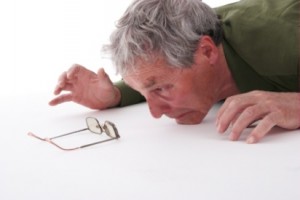 As we age, falls, and injuries from falls, become more of a concern. Nine out of every ten hip fractures occurs as the result of a fall, and more than 80% of people over the age of 65 hospitalized for injury were injured in a fall. It may seem that simple aging is a risk factor for falls, but people don’t fall just because they get older, there are a variety of other problems, generally associated with aging, that increase a person’s risk of falling. Some of the greatest risk factors associated with a fall include:
As we age, falls, and injuries from falls, become more of a concern. Nine out of every ten hip fractures occurs as the result of a fall, and more than 80% of people over the age of 65 hospitalized for injury were injured in a fall. It may seem that simple aging is a risk factor for falls, but people don’t fall just because they get older, there are a variety of other problems, generally associated with aging, that increase a person’s risk of falling. Some of the greatest risk factors associated with a fall include:
- Vertigo, which can be a side effect of several medications as well as a symptom of several possible conditions
- Muscle weakness
- Drops in blood pressure, especially on standing, which can have a variety of causes
- Slowed reflexes
- Problems in the legs and feet that can impair gait
- Visual and other sensory impairments
- Cognitive impairments
- Trouble with balance
Good nutrition and exercise can help reduce many of these risk factors and can reduce the risk of injury in the event a fall does occur.
Preventing falls with nutrition starts with staying well hydrated and eating frequently. Dehydration and drops in blood sugar or blood pressure can cause dizziness and lightheadedness, which can lead to a fall.
Drops in blood pressure, especially on standing, may occur when the heart isn’t functioning efficiently. Consuming plenty of foods that are rich in heart healthy omega-3 fatty acids can promote heart health and stabilize blood pressure. Omega-3 fatty acids also promote brain health, which can reduce confusion that can also be a factor in falls. In addition, some deficiencies, such as magnesium deficiency, can cause dizziness, and good nutrition can help prevent deficiencies and their associated symptoms.
Good nutrition also helps to strengthen bones, making them less likely to fracture in the event of a fall. Most people know how important calcium is to healthy bones, but calcium is only one of the nutrients critical to healthy bones. Magnesium, phosphorus, and vitamin K are all needed to build healthy bones, and vitamin D helps improve absorption and assimilation of calcium into the bones. Getting adequate sunshine and eating foods high in these nutrients helps improve bone health, making bones less likely to fracture in a fall.
Good nutrition also provides energy needed for exercise, which is just as critical to preventing falls and injuries. Weight bearing exercise doesn’t mean lifting weights (though it could). Rather, any exercise that involves staying upright against gravity, such as walking, climbing stairs, or using an elliptical, counts as weight bearing exercise. Weight bearing exercise can be high impact, low impact, or even no impact. The level of impact you choose will be based on your own comfort level, but any of these will provide many of the same benefits.
Weakness in the lower body can making walking difficult, while weakness in the upper back can make it difficult to stand erect, throwing off balance. Weight bearing exercise can help improve overall strength, making walking easier. Exercise also helps increase bone density and strength, protecting against injury, and builds muscle strength, providing additional support for the bones and joints.
To find out more about how how your lifestyle might be increasing your risk of falls, and what changes you can make to protect yourself, call Neurobalance now at 02 9938 5456 to arrange an appointment. We’ll talk with you about your diet and recommend specific exercises you can do to reduce your risk of a fall or fall-related injury.
